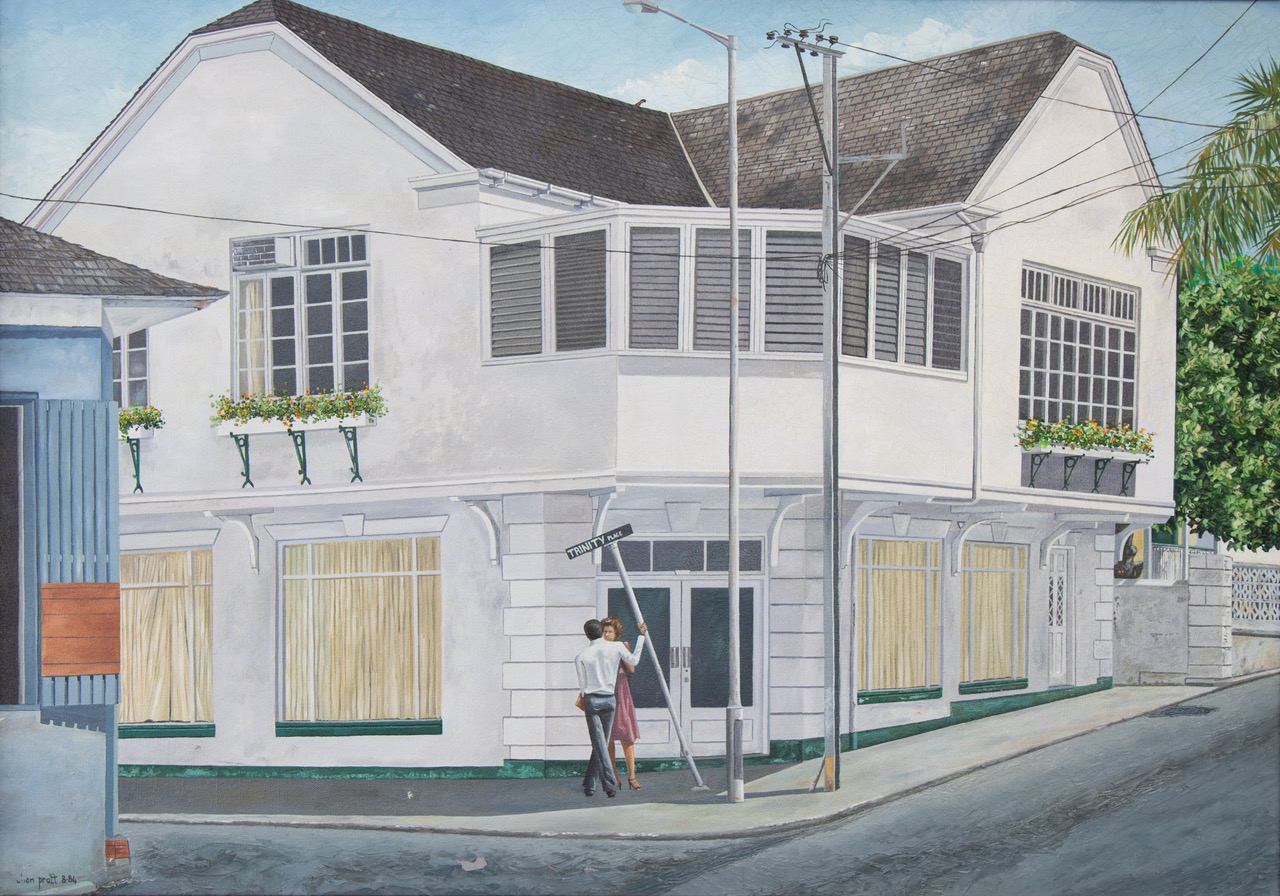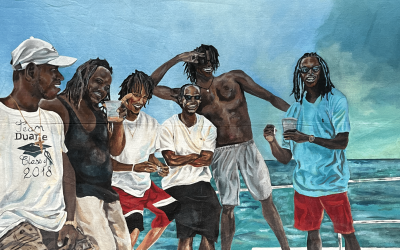
By Blake Fox
Slated to open on Thursday, May 2nd, 2019 at The National Art Gallery of The Bahamas (NAGB), “Resurrection” is a retrospective of over 100 paintings by noteworthy Bahamian artist Chan Pratt. The collection prominently features Bahamian landscapes between the 1980s and ‘90s with scrupulous attention to the local flora. Having died suddenly–and at a young age–much of Pratt’s work was undocumented and there is an unfortunate lack of historical information on the artist and his practice. To resolve this lack of exposure, the NAGB is working with Dewitt Chan (DC) Pratt, Chan Pratt’s son, and over 20 collectors of Pratt’s work to pay homage to his talent which was sometimes overlooked.
Chan Pratt’s floral adorned landscapes remind us of what our landscape used to look like.
Among the many botanical paintings in the collection, there are two paintings that focus on and present an appropriate contrast: buildings–instead of vegetation. Pratt’s application of paint is steady and precise, creating a sense of clarity in the work. Expectedly, concrete buildings and angular lines present a certain rigidity which complements the organic and painterly approach to nature in his work. Pratt’s attention to detail is impeccable: the repetition of the shingling and the window panes, the gentle folds in the curtains, and the subtle shadows all seem mundane, but these nuances reveal the artist’s contemplation and appreciation of the finer moments which may be deemed insignificant.
There is often a generalisation that artists are wild and messy, or that they work without direction, when really they are often very deliberate in their actions. The precision of Pratt’s work can be compared to that of an architect. You can essentially recognise the blueprints or the bones of the work. Continuing in this vein of conversation, the site of the painting Trinity Place (1984) is now home to the Central Bank of The Bahamas, which clearly speaks to the urbanisation of Downtown Nassau. Although the Downtown area of Nassau has seen urban growth over the years, the area seems disengaged and an insignificant part of the Bahamian cultural identity. While urbanisation is necessary to accommodate spatial and economic growth in a country, there should be serious urban planning from the onset.
In The Bahamas, there tends to be an overall lack of vision for the future. We would rather be immediately gratified by money and employment opportunities with little forethought of how actions will affect the country in years to come. The Nassau Urban Lab: Central Nassau Urban Regeneration Plan report was prepared for the government of The Bahamas in 2016. The report included insight from both international and Bahamian experts in the fields of urban planning, anthropology, and architecture. The Nassau Urban Lab outlines a plan to use Nassau’s heritage and natural resources to revive the economy in a sustainable way. Creating parks, green spaces, and creative spaces along the waterfront would put The Bahamas on a level playing field with nearby Caribbean countries by showcasing Bahamian history and culture in a way that enriches the experiences of both residents and tourists.
While somewhat connected to Downtown Nassau, the adjacent Over-the-Hill area has a starkly different identity–one that is not viewed favourably. The lack of water and sanitation infrastructures, dilapidated buildings, and few green spaces put this area is in serious need of revitalisation. Pratt’s characteristic floral adorned landscapes remind us of what our land used to look like. Urban sprawl has grazed our natural environment and left us with unattractive concrete facades that do not incite a sense of pride in our surroundings. The vacant lots in the Over-the-Hill area would be apt for creating green spaces that rejuvenate and foster a closer relationship and greater sense of community between the two areas.
Pratt’s paintings have visually preserved the natural landscape of The Bahamas over the years. Many of these landscapes are not recognisable today as our development as a country has obviously impacted the environment. It is evident from the Nassau Urban Lab report and supplemental urban and environmental studies that the creative and cultural arts will be crucial in supporting Nassau’s urban development moving forward.
“Resurrection” is curated by Holly Bynoe, NAGB’s Chief Curator. The show will open on Thursday, May 2nd, 2019 at 7 p.m., all are invited.
